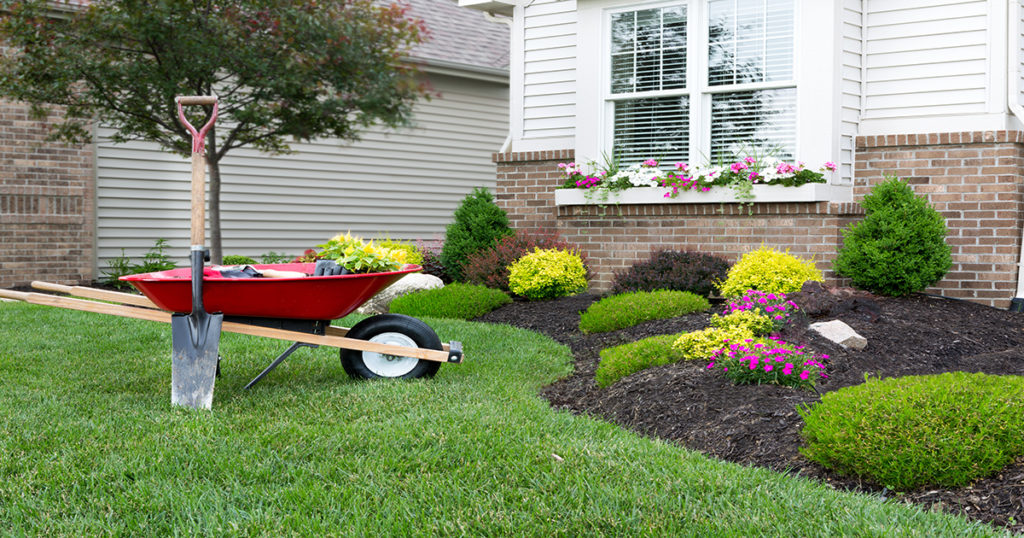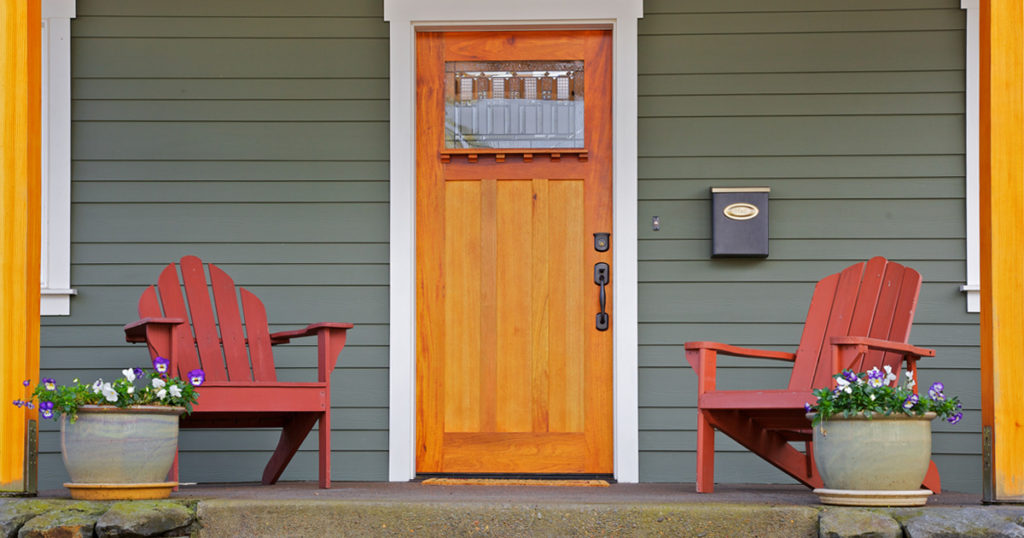As springtime rolls around, many homeowners are eager to get the outside of their homes looking refreshed and at peak curb appeal. Whether your spring landscaping plans include doing just enough to keep the HOA off your back, competing with your next-door neighbor’s green thumb, or purely for the enjoyment of doing yard work, below are four tips to stretch your dollars to get the biggest bang for your landscaping buck.
Clear It Out
The very first task before you make a trip to your local nursery or big box home improvement store is to get outside and walk your property. Take note of overgrown areas that might need special attention. Enlist the whole family and take a weekend to remove debris, leaves, or dead tree limbs from the yard, trim hedges, clear off your front porch, and perhaps pressure wash any surfaces that need a good cleaning. You might be surprised how far a few days spent using sweat equity will go.
Make a Plan
Once you have your space cleared you are ready to create a plan for your landscaping needs. This plan can range from incredibly simple to very advanced. In making your plan, determine what ideas are true needs and what are simply wants on your list. What will your budget be to complete these projects? And will these changes be implemented by you or will you need to rent equipment or hire professional help to achieve the look you are after? These days there are apps and online planning sites like Better Homes and Gardens “Plan Your Garden,” where you can digitally sketch out your plans for free. If you are hoping to get the biggest bang for your buck, starting with the right plans will take you far.
Get Smart
As your planning continues, it’s best to take time to educate yourself. Of course, there is an abundance of information on planting and caring for landscaping online. However, don’t overlook the local library for books as well as the expertise of smaller, local landscaping stores. Many times these local businesses can give you incredible insight on what types of plants and shrubs grow best in your area according to soil type and weather patterns. Finally, if there is a nearby college or university, many offer free gardening courses and help within their horticulture departments.
Think Outside the Box
One of the best ways to update your landscaping in a smart way is to pair economy with good environmental practices. Can you make your own compost? Can you have mulch made from the dead tree you are having removed? Consider plant species that don’t require high-demand watering needs or if you have the space, start a rainwater collection barrel to use for DIY irrigation needs. Plant for now and later. What types of flowers will return year after year? What about a slow-growing tree? Even if you may move on in a few years, your good landscaping choices could generate happiness for your house’s future owners for years to come.



